Parvo is a highly contagious disease caused by the canine parvovirus. Parvovirus is a persistent virus and can survive in the environment and infect animals for a year. Unlike other viruses, parvovirus is resistant to heat, detergents, and alcohol.
Spread occurs through direct and indirect contact. The virus spreads quickly through the dog's feces and vomit. In fact, it never happens that the infection is transmitted from dog to dog, but mainly through indirect contact. All dogs are susceptible to this virus, but the virus mainly occurs in dogs up to one year of age. It is common in young animals when they move from the kennel to their new home. This is mainly due to the dogs’ immune system weakened by stress. During this time, the dog also builds up its own immunity, the antibodies that the dog has ingested through its mother's milk disappear during this time.
What are the symptoms of parvovirus?
If the virus passes through the mouth for a short time, mainly rapidly dividing cells are infected. Infected cells include intestinal wall cells and bone marrow cells. Some symptoms that may appear are:
-
To throw up
-
bloody diarrhea
-
lethargy
-
Severe dehydration
-
High fever
-
Pale mucous membranes
-
Sometimes shock
What is the diagnosis of parvovirus?
The diagnosis is initially made based on the clinical picture of the dog. Parvovirus is common in (young) dogs that are not fully vaccinated. This is common in dogs that come from bread breeders. Other features associated with a parvovirus diagnosis include high fever, vomiting, and watery diarrhea.
A stool examination can then be used to prove that it is actually the parvovirus. A blood test can also be performed. However, there is no specific blood count for the parvovirus, the blood count visible in parvovirus can also be visible in other diseases.
What is the treatment for parvovirus?
The earlier you get infected, the better the chances of recovery. There is no treatment for the virus and the dog must fight it itself by producing antibodies. Due to the diarrhea, the animal loses a lot of liquid, which can possibly be supported with an infusion. Antibiotics and anti-inflammatories can be given. Since the cause cannot be controlled, symptomatic treatment is instituted. To prevent the parvovirus, you can take hygiene measures by wearing clean clothes in young animals. The animal is vaccinated as a precaution, but this is not a guarantee that the dog will not be able to get them.
What is the vaccination against the parvovirus?
The best prevention is to vaccinate the puppy at the sixth, ninth and twelfth week. This vaccination ensures that the animal produces antibodies. These vaccinations are important because at this age the puppy will no longer receive antibodies from the mother. However, it is important that you repeat this vaccination. The first repetition occurs when the animal is 15 months old. After that, it is enough to give the animal a vaccination every two to three years.
Vaccination is done with a weakened vaccine virus. This is a specially developed, weakened virus that stimulates the dog's immune system to produce antibodies without the animal becoming ill itself. However, sometimes a puppy will have the antibodies it received from the placenta attack the transplant virus. As a result, the transplant virus cannot do its job properly.
Is parvovirus a zoonosis?
The virus is highly contagious to other dogs, but not to humans.
This text was translated by a translation machine
 Horse Pharmacy
Horse Pharmacy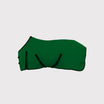 Rugs
Rugs Care
Care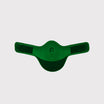 Saddle and Attachments
Saddle and Attachments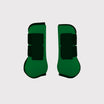 Leg Protection
Leg Protection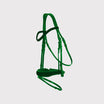 Bridles
Bridles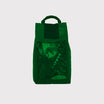 Feed
Feed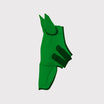 Fly Masks
Fly Masks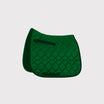 Saddle Pads
Saddle Pads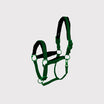 Headcollars and Ropes
Headcollars and Ropes Bits
Bits Other Disciplines
Other Disciplines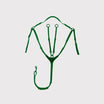 Reins and Auxiliary Reins
Reins and Auxiliary Reins Clipping
Clipping Western
Western Eventing
Eventing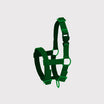 Foals
Foals Reflection
Reflection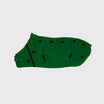 Therapy Products
Therapy Products Boots and Shoes
Boots and Shoes Breeches and Belts
Breeches and Belts Tops
Tops Safety
Safety Competition
Competition Heated Clothing
Heated Clothing Gloves
Gloves Socks
Socks Spurs and Attachments
Spurs and Attachments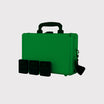 Technology
Technology Whips
Whips Gifts
Gifts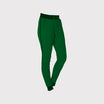 Casual Wear
Casual Wear Underwear
Underwear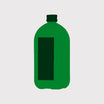 Rider Pharmacy
Rider Pharmacy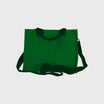 Bags
Bags Books
Books Laundry supplies
Laundry supplies Jewelry
Jewelry Feed and Waterbowls
Feed and Waterbowls Equipment
Equipment Tack Room
Tack Room Pest Control
Pest Control Arena
Arena Horse Toys
Horse Toys Wheelbarrows
Wheelbarrows Yard
Yard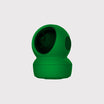 Surveillance
Surveillance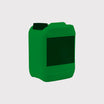 Disinfect
Disinfect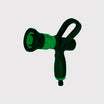 Washing Area
Washing Area Lighting
Lighting Horse Pasture
Horse Pasture Current Conductors
Current Conductors Pole
Pole Insulators
Insulators Energisers
Energisers Gate Handles
Gate Handles Batteries and Accumulator
Batteries and Accumulator Nets
Nets Grounding
Grounding Tools
Tools Fencing Security
Fencing Security Wolf Defense
Wolf Defense Fencing Sets
Fencing Sets Fence locks
Fence locks Dogs
Dogs Cats
Cats Rodents
Rodents Dogs Pharmacy
Dogs Pharmacy Cats Pharmacy
Cats Pharmacy Rodents Pharmacy
Rodents Pharmacy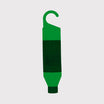 Cattle Pharmacy
Cattle Pharmacy Poultry Pharmacy
Poultry Pharmacy Veterinary Supplies
Veterinary Supplies Cattle
Cattle Sheep and Goats
Sheep and Goats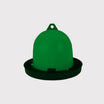 Poultry
Poultry Heat Lamps
Heat Lamps Calves
Calves Marking
Marking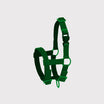 Halters
Halters